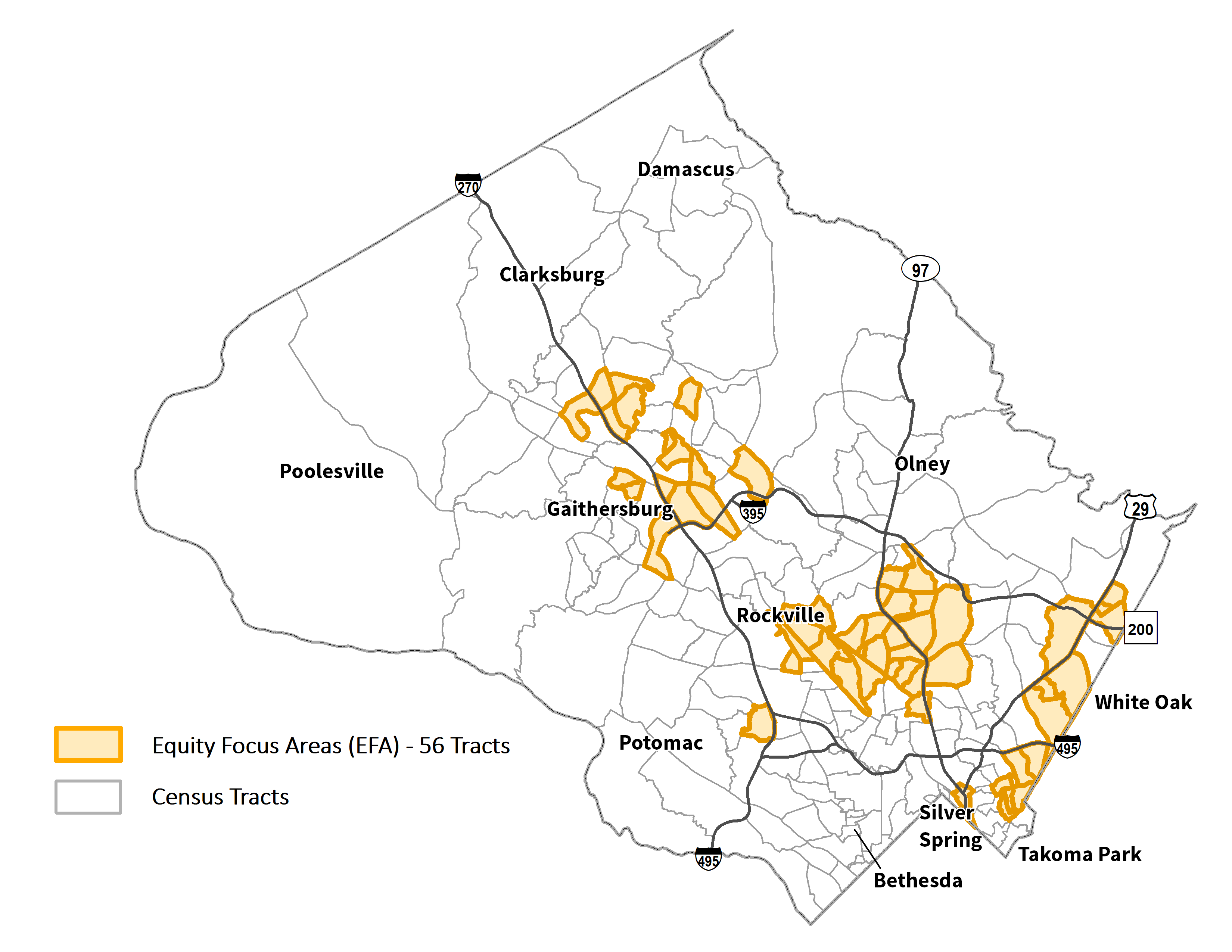The Equity Focus Areas Analysis served as a springboard to the development of the Community Equity Index (CEI). The CEI is a composite measure of equity-related indicators that helps users understand socio-economic conditions that drive advantage and disadvantage across the county. It measures the extent to which individual neighborhoods are representative of the socio-economic diversity of the county.
Please note: Montgomery Planning is now using the Community Equity Index and has retired the Equity Focus Areas Analysis. The following information is provided for project background only.
Background
Historically, equity has not been part of planning in America. Change is long overdue. Encouragingly, a positive shift toward equity in the planning profession is happening in Montgomery County, across the DC region, and nationally. Montgomery Planning embraces this shift as part of our responsibility to develop plans, policies, and regulations that benefit all community members and reduce or eliminate inequity. Our goal is to apply a holistic equity lens to planning practices to address existing inequities and prevent the creation of new inequities. In support of this work and the Equity Agenda for Planning, Montgomery Planning developed the Equity Focus Areas Analysis tool.
Equity Focus Areas are parts of Montgomery County that are characterized by high concentrations of lower-income people of color, who may also speak English less than very well. Montgomery Planning developed a data-driven tool to identify and map these areas in the county in order to assess potential racial and social inequities. This includes access to resources and opportunities for employment, transportation, education, health, and government services that support a good quality of life.
Identifying communities that may not have equitable access to resources or opportunities helps direct planning efforts to better understand existing conditions and the area’s history. It also supports finding effective ways to engage the community. This will facilitate bringing racial equity and social justice considerations into the master planning process so that Montgomery Planning can produce master plans that will foster more equitable outcomes for communities in Montgomery County.
About 26% of county’s population live in Equity Focus Areas
Montgomery Planning staff identified approximately 275,875 people or 26.5% of the county population as living in Equity Focus Areas. These areas are primarily found along the I-270 Corridor, the Route 29 Corridor, and the eastern portion of Downcounty.
According to an initial analysis, the population in Equity Focus Areas, compared to the county overall, is younger, has a lower educational attainment level, and is more likely to be Hispanic. The annual income of one-third of the households in these areas is under $50,000, and these residents are more likely to pay 35% or more of their income on housing costs. Households in Equity Focus Areas are also less likely to be in owner-occupied housing, and the median housing value is two-thirds of the value countywide.
Analysis methodology tailored to Montgomery County
Unlike other regional and national racial equity analysis, the Equity Focus Areas Analysis used a methodology tailored to Montgomery County.
The analysis examined three specific variables – household income, race and ethnicity, and the ability to speak English– to identify areas of the county that may experience the highest inequities in access to transportation, job opportunities and other resources supporting a high quality of life. Montgomery Planning applied a modified indexing approach to combine and analyze these variables, using the latest datasets available from the U.S. Department of Housing and Urban Development (HUD) and the American Communities Survey at the U.S. Census Tract scale. Using this data, Montgomery Planning identified areas in the county with high concentrations of lower-income people of color who may also speak English less than well.